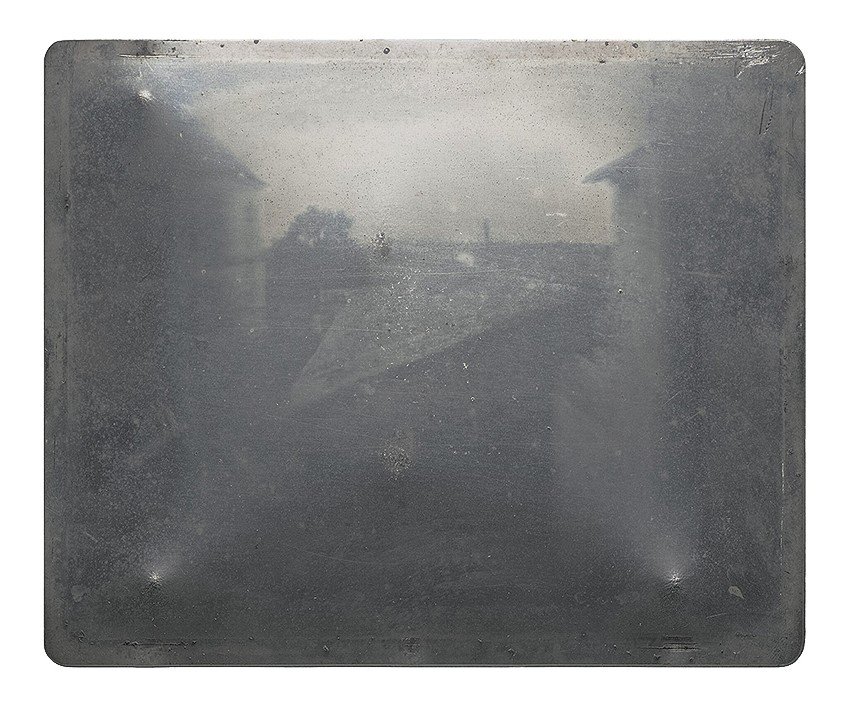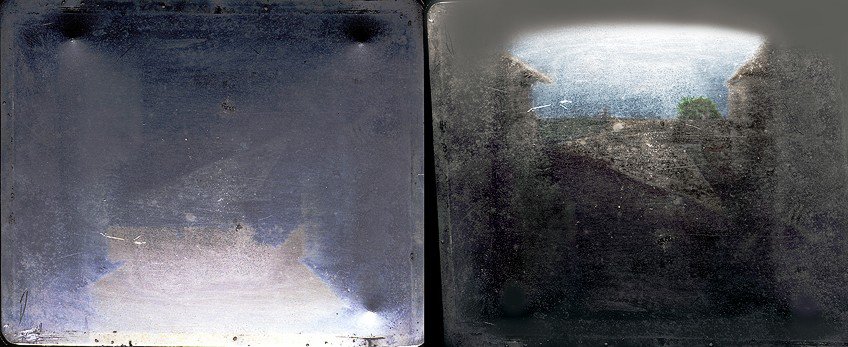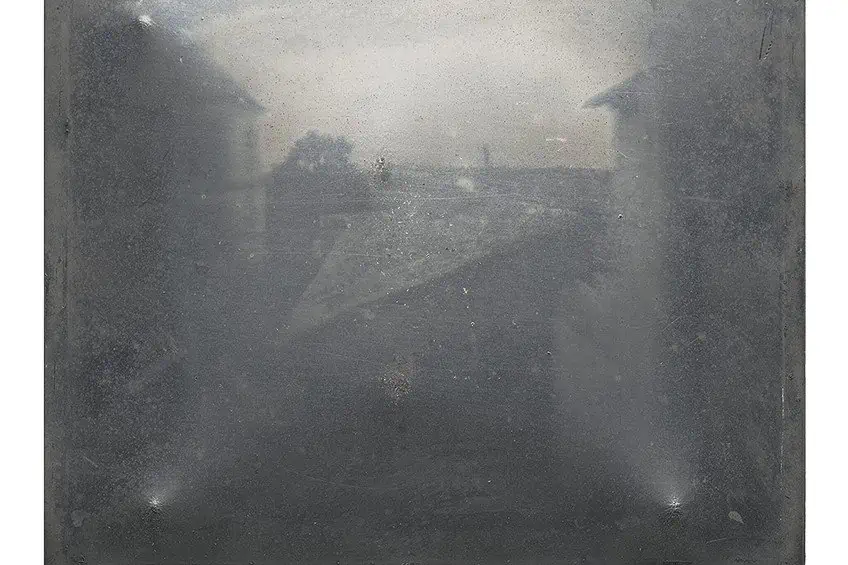First Picture Ever Taken – Through the Lens of Time
What is the oldest photo, what was depicted in the first permanent photograph taken, and when was the first photo taken in the world? First defined in literature in 1839, photography began as a series of experiments using photochemical methods, early camera obscuras, and various photographic processes. Today, most people have access to image-making devices and smartphones that can easily capture moments with the click of a button, and perhaps, the motion of a hand. In this article, we will introduce you to the history of the world’s first picture that marked the beginning of photographic technology. Keep reading to learn more about the first picture ever taken!
Contents
Unveiling the Origin of Photography
What was the first picture ever taken, how was the world’s first photograph taken, and who photographed the world’s first image? If you are a fan of image-making processes and wish to learn more about the history of the world’s first image, then keep reading! Contrary to popular belief, the earliest notions of photography began with the introduction of the camera obscura, which has been recorded in Eastern texts as early as the 4th century BCE. Today, in an era so saturated with images of all kinds and genres of all types, it can be difficult to establish a vantage point through which one can appreciate images.
In the 19th century, photographic technology manifested itself through the experiments of many scientists and innovators, who sought to explore the concept of the camera obscura and the relationships of light as it related to its interactions with lenses and mirrors.
The term “camera obscura” itself was also directly referenced in the work of astrologer Johannes Kepler in his 1604 text Ad Vitellionem Paralipomena, which led to his realization that images were seen as inverted on the eye’s retina, which was somehow corrected by the brain. By 1611, Kepler experimented with correcting the inverted image by using a telescope to correct the inversion in a camera obscura.

Such technology and understanding also caused a stir in art circles, which saw a few skeptics question the influence of the camera obscura on the declining production of history painting and the resultant increase in genre scenes. Photography has left a profound and perhaps irreversible impact on the production of traditional art. Today, many contemporary artists continue to incorporate modern spins on antique photography concepts to add more dimension to their works.
Such artists include the works of Minnie Weisz, James Turrell, and Vera Lutter among many others.
The Invention of the First Photograph
| Artist Name | Joseph Nicéphore Niépce |
| Date of Birth | 7 March 1765 |
| Date of Death | 5 July 1833 |
| Nationality | French |
| Mediums | Heliography, early photography, and printmaking |
The first photograph was taken around 1826 by a French inventor called Joseph Nicéphore Niépce, whose explorations in photographic processes led to the creation of the oldest surviving photograph. Recognized as a major pioneer in photography, Niépce was credited with inventing a technique called heliography, which was the first example of a photoresist. Photoresist refers to the light-sensitive material that was used to produce the first image together with a process called photogravure and photolithography.
Niépce’s passion for discovering a process for photo-etched printmaking began as early as 1811 when he experimented with a substance called Bitumen of Judea.
This was an ancient asphalt that was incorporated into etching processes and when exposed to light, would harden. In his trial and error, Niépce applied the Bitumen of Judea on various plates made from silver, copper, glass, and even pewter to discover that the surface that was exposed to the most light had a strong resistance to dissolving in the mixture of petroleum and oil of lavender. As such, the uncoated areas could be treated with aquatint and acid etching to print black.
The asphalt, Bitumen of Judea, was known to have a complex chemical structure that was composed of polycyclic aromatic hydrocarbons connected to benzene rings and a small ratio of Sulphur and nitrogen. The hardening process of the Bitumen was first discovered in an observation by Jean Senebier in 1782, which was later studied in the 1990s by Jean-Louis Marignier. Around 1822, Niépce produced the first light-resistant engraving copy using heliography without the aid of a lens.
He achieved this by exposing the print to the light-sensitive plate and four years later, he started experimenting with pewter plates due to their reflective qualities to produce clearer images.
On Heliography, or a method of automatically fixing by the action of light the image formed in the camera obscura (1829) is an important synopsis by Niépce that details his intentions of using heliographic photogravure to produce master plates for intaglio, lithography, or relief works. This would mean that images could; firstly be produced, and secondly, be reproduced as copies from the master plate. While Niépce did not fulfill all his wishes for expanding the possibilities of heliography, his nephew, Claude Félix Abel Niépce de Saint-Victor, succeeded him by the 1850s by producing prints from etched heliographs.

View from the Window at Le Gras (c. 1826 – 1827)
| Date | c. 1826 – 1827 |
| Medium | Heliograph on pewter |
| Dimensions (cm) | 20 x 25 |
| Where It Is Housed | Harry Ransom Center, Austin, Texas, United States |
What was depicted in the first permanent photograph taken, and when was the first photo taken in the world? The first photo in the world was View from the Window at Le Gras, which was shot around 1826 or 1827 by Niépce using a hot pewter plate that he coated in the light-sensitive bitumen of Judea. Pewter is an alloy composed of tin, while the bitumen, is also referred to as Syrian asphalt. The first picture ever taken shows us a view of blurred shapes identified as buildings and tree lines. Thanks to modern technology, the 200-year-old image was enhanced to enable us to explore the image in as much clarity as we possibly can.
The first photo in the world is certainly not the most visually pleasing one, however, it was the first permanent breakthrough in photography history since most experiments before Niépce’s successful image were only temporary.
So, how did Niépce capture the image? Niépce positioned the camera obscura to face the outdoors from his window pane, which was located on the second story of his estate called Saint-Loup-de-Varennes or “Le Gras”. It is believed that Niépce exposed the plate for at least eight hours and perhaps around two days at max to ensure the bitumen was exposed to light properly. The result was that the asphalt was hardened in the places that were exposed the most to produce this blurry streetscape that only became visible once the unhardened asphalt was removed. One can spot a few details of the window scene. These include a building’s windows on the left and an unknown form on the right. A colorized version of the photo also reveals the roofs of other buildings in the vicinity and a field in the background.

The early concepts of light-sensitive materials date back to the 17th century with figures like Angelo Sala making observations that sunlight could transform into a silver nitrate black and when the paper is bound to silver nitrate for approximately a year, it too could turn black. By 1694, natural philosopher Wilhelm Homberg also detailed how some chemicals could be darkened by light. Any explorations before the 17th century on light-sensitive materials had been unrecorded and remain unknown. Perhaps even less credited was the British chemist Elizabeth Fulhame, whose exploration of the effects of light with silver salts led to the discovery of catalysis, which was later recognized as a significant contribution to photography.
Niépce himself had been known to experiment with silver salts, however, his early experiments in 1816 proved unsuccessful.
View from the Window at Le Gras was executed using a thin layer of bitumen that was dissolved in lavender oil and then applied on the pewter surface and dried. After the exposure process, Niépce removed the unhardened areas using a solvent, which resulted in a positive image characterized by the dark areas from the bare pewter and the light areas from the hardened bitumen. To view the image properly, Niépce had to illuminate the plate and view it in a way that one could distinguish between the light and dark areas. By 1829, Niépce partnered with the French photographer Louis Daguerre to enhance the bitumen process.
This resulted in the two substituting the bitumen with a more sensitive resin and opting for a different treatment in the post-exposure phase. These changes produced images that were of higher quality, but with Niépce’s untimely death in 1833, the process was further refined by his son, Isidore, alongside Daguerre. By 1839, the French government exchanged their photography technique for lifetime pensions, which resulted in the expansion and increased access to photography.
The Rediscovery of the First Picture Ever Taken
In 1952, View from the Window at Le Gras was traced and rediscovered by the historian duo Alison Gernsheim and her husband Helmut Gernsheim. The pair employed the assistance of a specialist at the Kodak Research Laboratory to help produce a modern copy but this was incredibly challenging since it was difficult to create an accurate representation. Helmut Gernsheim went on to retouch one of the printed copies of the image to make the elements more visible.
This version of the first photo was published until the late-1970s with the original plate becoming disfigured and distorting the visibility of other elements in the image.
Throughout the 50s and 60s, the photograph had been included in many tours and shows across Europe, and by 1963, it was acquired as part of the Gernsheim’s collection by Harry Ransom, who placed it in the collection at the University of Texas at Austin. In 2012, View from the Window at Le Gras was also exhibited at a show in Germany titled The Birth of Photography—Highlights of the Helmut Gernsheim Collection and has since rarely been exhibited on tour. Today, the photograph remains part of the Harry Ransom Center collection in the main lobby.
Conservation and Analysis
Between 2002 and 2003, a special scientific study of the first image was undertaken by the Getty Conservation Institute, which analyzed the image using X-ray fluorescence spectroscopy technology and various other techniques. The analysis revealed the make-up of the photograph and confirmed that Niépce used a pewter plate that contained traces of copper, iron, and nickel. The Getty Conservation Institute also designed and constructed a secure oxygen-free case system to contain the image, which is now considered to be an important artifact.
In 2003, the photograph had also been listed as one of the photographs that changed the world by Life magazine. Specialists from the Louvre Museum also analyzed the image in 2007 and adopted an ion beam analysis approach combined with information from a 2MV electrostatic accelerator to reveal the oxidation process of the image.
View from the Window at Le Gras has since been widely acknowledged as the prime example of scientific innovation led by inquisitive and innovative figures like Joseph Nicéphore Niépce. With this vague but significant artifact available for us to study, one can appreciate how such products of early photography paved the way forward for the evolution of new techniques, while sparking ideas around how artists can leverage photography in visual storytelling. We hope that by gaining insight into the power of images and creation, you can continue to produce works that resonate with the human experience and encourage you to keep experimenting!
Frequently Asked Questions
When Was the First Photo Taken in the World?
The first picture ever taken in the world, and also the oldest photo, was shot around 1826 or 1827. The image was created using a technique called heliography, which was invented by Joseph Nicéphore Niépce. Today, the original pewter plate that Niépce used can be seen at the Harry Ransom Center in Texas.
What Was the First Ever Photo Taken?
View from the Window at Le Gras (c. 1826 – 1827) is recognized as the first ever photo taken using a method called heliography. This image also became known as the first successful permanent image.
Who Took the World’s First Permanent Photograph?
Joseph Nicéphore Niépce, a famous French inventor, was credited as the photographer of the world’s first permanent photograph. Niépce invented a process called heliography, which involved the use of a camera obscura, with its image projected onto a pewter plate that was coated in bitumen.
What Was Depicted in the First Permanent Photograph Taken?
In the first permanent photograph, Joseph Nicéphore Niépce depicted a view from his window on the second story of the Saint-Loup-de-Varennes estate in Bourgogne-Franche-Comté, France. The image was titled after the view as View from the Window at Le Gras (c. 1826 – 1827).
Jordan Anthony is a Cape Town-based film photographer, curator, and arts writer. She holds a Bachelor of Art in Fine Arts from the University of the Witwatersrand, Johannesburg, where she explored themes like healing, identity, dreams, and intuitive creation in her Contemporary art practice. Jordan has collaborated with various local art institutions, including the KZNSA Gallery in Durban, the Turbine Art Fair, and the Wits Art Museum. Her photography focuses on abstract color manipulations, portraiture, candid shots, and urban landscapes. She’s intrigued by philosophy, memory, and esotericism, drawing inspiration from Surrealism, Fluxus, and ancient civilizations, as well as childhood influences and found objects. Jordan is working for artfilemagazine since 2022 and writes blog posts about art history and photography.
Learn more about Jordan Anthony and about us.
Cite this Article
Jordan, Anthony, “First Picture Ever Taken – Through the Lens of Time.” artfilemagazine – Your Online Art Source. November 17, 2023. URL: https://artfilemagazine.com/first-picture-ever-taken/
Anthony, J. (2023, 17 November). First Picture Ever Taken – Through the Lens of Time. artfilemagazine – Your Online Art Source. https://artfilemagazine.com/first-picture-ever-taken/
Anthony, Jordan. “First Picture Ever Taken – Through the Lens of Time.” artfilemagazine – Your Online Art Source, November 17, 2023. https://artfilemagazine.com/first-picture-ever-taken/.



